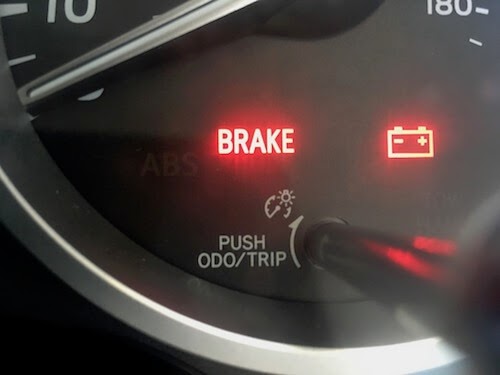A sudden loss of braking power can transform a routine drive into a life‑threatening ordeal. In response to mounting reports of brake component malfunctions on select Ford Expedition models, the automaker has issued a major recall affecting thousands of vehicles. This article offers a comprehensive guide to the recall, examining its root causes, affected models, owner obligations, repair procedures, safety recommendations, and broader implications for automotive consumers. With search‑optimized insights and practical advice, drivers and prospective buyers alike can stay informed, protect their families, and navigate the recall process with confidence.
A. Background of the Recall
Ford announced the Expedition brake failure recall amid growing customer complaints about inconsistent pedal feel, reduced stopping power, and in rare cases, total brake loss. Understanding the recall’s origins sheds light on how and why such defects occur:
A. Initial Reports: Owners in North America, particularly in humid or coastal regions, noted spongy brake pedals and warning lights after moderate use.
B. Internal Investigation: Ford’s quality‑control teams traced the problem to brake booster diaphragms and hydraulic seals that degrade prematurely.
C. Regulatory Involvement: The National Highway Traffic Safety Administration (NHTSA) opened a formal probe (Recall ID: 25S05) after inspecting field data and crash reports.
D. Public Disclosure: On April 10, 2025, Ford published recall notices on its website, owner portals, and mailed safety bulletins to registered Expedition owners.
B. Affected Models and Production Years
Not every Expedition on the road is at risk knowing which model years and trim levels are subject to recall helps owners verify their vehicle’s status:
A. Model Years: 2018 through 2022 Ford Expedition and Expedition EL (Max) vehicles.
B. Engine Types: 3.5L EcoBoost V6 in XLT, Limited, Platinum, and Timberline trims.
C. VIN Range: Specific 17‑character VIN sequences beginning with “1FMJU1” through “1FMJU3,” detailed in Ford’s official bulletin.
D. Production Plants: Assembled at Ford’s Kentucky Truck Plant, where brake component sourcing shifted in late 2017.
E. U.S. and Canada: Recall applies to vehicles sold or registered in the United States, Canada, and select U.S. territories.
C. Technical Cause of Failure
Delving into the engineering breakdown provides transparency and context for consumers and technicians alike:
A. Brake Booster Diaphragm Weakness: The rubber diaphragm within the brake booster may develop micro‑tears under repeated thermal cycling.
B. Hydraulic Seal Deterioration: Seals connecting the master cylinder and booster housing can swell when exposed to moisture, leading to internal leaks.
C. Loss of Vacuum Assist: Compromised diaphragms reduce the vacuum‑assist function, making the pedal require excessive force to engage the brakes.
D. Contaminated Brake Fluid: In some cases, degraded seals permit moisture ingress, lowering fluid boiling point and further impairing brake performance.
E. Warning Light Lag: The on‑board diagnostic system may not instantly detect seal integrity issues, delaying driver alerts until pedal force exceeds a critical threshold.
D. Symptoms and Owner Alerts
Early detection of brake booster issues can prevent accidents. Owners should be vigilant for these warning signs:
A. Spongy Brake Pedal: A soft or “mushy” feel when depressing the brake pedal, requiring greater effort to slow the vehicle.
B. Increased Pedal Travel: The pedal travels closer to the floorboard before brakes engage.
C. Brake Warning Light: Activation of the master warning lamp or ABS warning indicator on the instrument cluster.
D. Hissing Noise: Audible air leaks or hissing from the engine bay when the brake pedal is pressed.
E. Reduced Stopping Power: Noticeable decline in deceleration rate even under firm braking.
F. Inconsistent Brake Response: Varying braking performance between successive stops without apparent cause.
E. Safety Risks and Real‑World Incidents
Brake failure is among the most serious automotive defects, posing grave risks to drivers, passengers, and pedestrians:
A. Crash Reports: NHTSA data cites at least 15 collision reports linked to delayed braking in recalled Expeditions.
B. Injury Cases: Six occupants sustained minor to moderate injuries when rear‑end collisions occurred at city speeds.
C. Near‑Miss Events: Numerous drivers reported narrowly avoiding obstacles due to last‑moment brake application.
D. Insurance Claims: Fender‑benders and property damage claims spiked following symptom onset in late 2024.
E. Public Concern: Social media forums buzzed with owner anecdotes, pressuring Ford to accelerate repairs.
F. Ford’s Recall Remedy
Ford has established a structured repair program to address affected vehicles at no cost to owners:
A. Inspection Procedure: Dealers will examine the brake booster assembly, master cylinder, and seal integrity.
B. Component Replacement: Defective boosters and associated hydraulic seals are replaced with upgraded, moisture‑resistant units.
C. Brake Fluid Flush: Technicians perform a complete system flush and replace with DOT 4 fluid meeting Ford specifications.
D. Software Calibration: ECU brake-control modules receive OTA updates (or dealer reprogramming) to enhance warning light sensitivity.
E. Quality Verification: Post‑repair road tests ensure pedal feel meets factory performance benchmarks.
G. Owner Action Steps

Affected Expedition owners must act promptly to secure free repairs and safeguard their vehicles:
A. Check Recall Status: Visit Ford’s recall lookup page or NHTSA’s website and enter the 17‑digit VIN.
B. Schedule Repair: Contact the local Ford dealership service department and reference Recall 25S05.
C. Arrange Transportation: Inquire about loaner or shuttle vehicles if repairs extend beyond four hours.
D. Keep Documentation: Retain all repair orders and bulletins in case of resale or future warranty inquiries.
E. Monitor Brake Performance: After repairs, report any lingering symptoms to Ford Customer Service for follow‑up action.
H. Consumer Rights and Legal Considerations
Understanding federal and state regulations helps owners assert their rights under the Motor Vehicle Safety Act:
A. Lemon Law Protections: Multiple unsuccessful repair attempts may qualify the vehicle for buyback or replacement in certain states.
B. Extended Warranty Coverage: Ford extends powertrain warranty by one year for brake‑related issues on affected models.
C. State Reimbursement: In jurisdictions requiring owner‑paid pre‑recall repairs, owners may seek reimbursement from Ford.
D. Class Action Potential: Pending litigation may entitle owners to compensation beyond repair costs if negligence is proven.
E. Privacy and Data: Declining OTA updates could disable certain diagnostic warnings; owners must consent to data sharing to maintain full recall coverage.
I. Preventive Maintenance Tips
Beyond the recall, owners can adopt best practices to prolong brake system life and enhance safety:
A. Regular Brake Fluid Changes: Replace fluid every 24 months or 24,000 miles, whichever comes first.
B. Visual Inspections: Check booster vacuum hoses and connectors for cracks, kinks, or loose fittings.
C. Stay Dry: Park in covered areas to minimize moisture exposure if driving in humid climates.
D. Periodic Brake Tests: Gently test braking performance in safe, open areas after long highway drives.
E. Professional Tune‑Ups: Include brake booster and ECU diagnostics in annual service visits.
J. Broader Industry Implications
Recalls of this scale prompt the automotive sector to reevaluate manufacturing standards and quality‑control processes:
A. Supplier Oversight: OEMs may tighten audits of brake component vendors, demanding ISO and TS certifications.
B. Material Innovation: Development of advanced elastomers and sealants resistant to moisture and temperature extremes.
C. Software Integration: Enhanced onboard diagnostics to detect diaphragm or seal degradation before driver awareness.
D. Cross‑OEM Learning: Sharing recall data across manufacturers to anticipate similar failures in related platforms.
E. Regulatory Evolution: NHTSA may update braking system standards to include more rigorous durability testing.
K. Impact on Ford’s Reputation and Sales
High‑profile recalls can dent consumer confidence, but transparent remediation and customer support can mitigate fallout:
A. Brand Trust: Ford’s prompt response and free repairs reinforce commitment to safety.
B. Sales Figures: Preliminary data suggest a slight dip in Expedition retail orders in Q2 2025, offset by incentives.
C. Dealer Relations: Service departments are incentivized to expedite recall repairs, maintaining owner satisfaction scores.
D. Long‑Term Loyalty: Owners whose vehicles are fixed promptly often report increased brand loyalty.
E. Competitive Landscape: Rival SUVs may see temporary sales gains from cautious buyers delaying purchases.
L. Media Coverage and Public Perception

How recalls are reported shapes buyer attitudes and social media discourse:
A. News Outlets: Automotive press highlighted the recall in April 2025, emphasizing safety risks and Ford’s action plan.
B. Digital Forums: Enthusiast communities on Reddit and Facebook exchanged repair tips and shared recall experiences.
C. Influencers: YouTube reviewers demonstrated pre‑ and post‑repair brake tests to reassure viewers.
D. Search Trends: Google Searches for “Expedition brake recall” spiked 350% following the public announcement.
E. Sentiment Analysis: Overall sentiment remained neutral‑positive, with most owners grateful for free repairs.
M. Future Outlook for Expedition Owners
After completing recall repairs, owners should feel confident about driving their Expeditions but vigilance remains key:
A. Monitor for Recurrence: Although rare, any return of symptoms should be reported and re‑inspected.
B. OTA Update Enrollment: Opt into Ford’s connectivity programs to receive future diagnostic and safety updates.
C. Stay Informed: Subscribe to Ford Owner newsletters for news on recalls, service campaigns, and software upgrades.
D. Join Owner Communities: Forums and social groups offer timely advice, aftermarket best practices, and maintenance hacks.
E. Plan for Resale: Vehicles with documented recall repairs often command higher resale values due to proven safety compliance.
Conclusion
Brake system failures strike at the very core of vehicular safety. Ford’s Expedition brake failure recall underscores the importance of rigorous quality assurance, responsive customer care, and transparent communication. By understanding the technical causes, recognizing warning signs, taking swift recall‑repair action, and maintaining preventive maintenance, Expedition drivers can safeguard themselves and their passengers. As the industry learns and adapts, recalls like this ultimately drive innovation in materials, diagnostics, and manufacturing benefiting all drivers in the long run.











